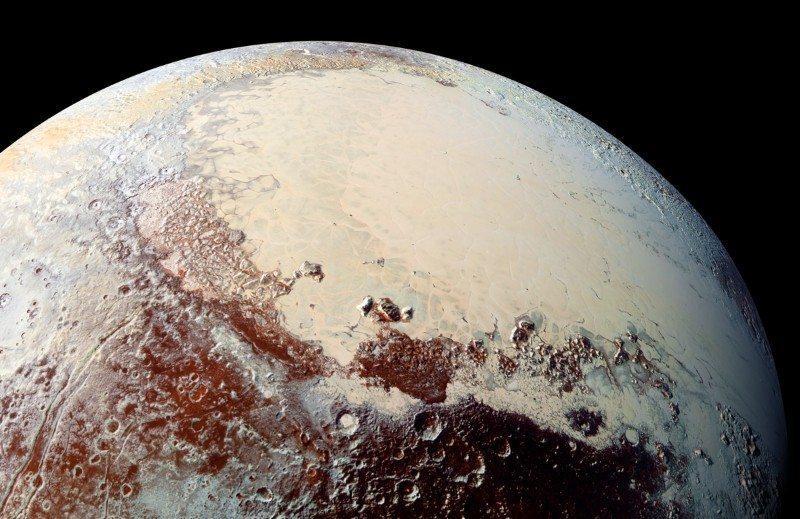New Horizons Spacecraft Paints a New Picture of Pluto
Alexander Neil / 9 years ago

The dwarf planet on the edge of our Solar System, Pluto, is one of the most enigmatic and unknown to us. Now, a newly published report based on data taken by the New Horizons spacecraft has allowed researchers to get a far clearer picture of the true nature of Pluto.
Pluto’s geology is one of great variety and beauty, including vast crevices, craters and large valleys that stretch across much of its surface. As a contrast to this, there is a 1,000 kilometer long flat plain in the northern hemisphere named the Sputnik Planum. This area is surrounded by enormous icy mountains and large glaciers that flow into the plain. Those studying the plain believe that Pluto’s surface must be constantly reshaping as it is completely unblemished by craters or other features, with Jeffery Moore, a New Horizons co-investigator at NASA Ames Research Center stating that “it can’t possibly be more than 10 million years old; it could also be a day old.” This is before even considering the unusual mountainous protrusions that are believed to be cryo-volcanoes.
Pluto’s atmosphere is also very cold, even colder than researchers believed it would, despite its distance from the sun. Near the surface, the atmosphere is a chilly -233 degrees Celcius, warming to -163 at higher altitudes. The temperature drops off drastically in the upper atmosphere however, with gasses cooling to -202 Celcius. These cold temperatures mean that few gasses escape Pluto’s atmosphere, despite its low gravity, as they are unable to gain the energy to move and end up trapped close to the planet.
This new analysis of the flyby of Pluto that took place in July last year has been published by the journal Science and despite all this new knowledge, there is still so much more to discover. These amazing landscapes also make you wonder just what other unearthly beautiful landscapes exist out there on other bodies in the Solar System. Who knows what else could still be out there?



















